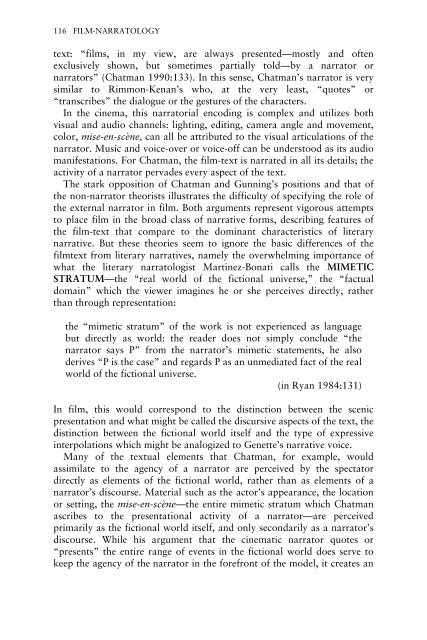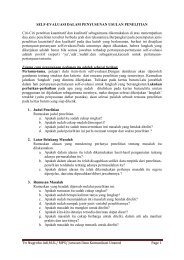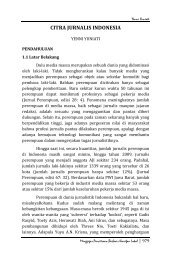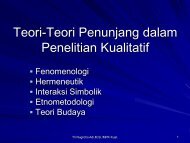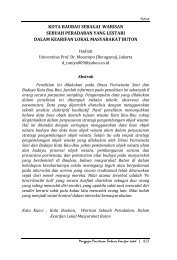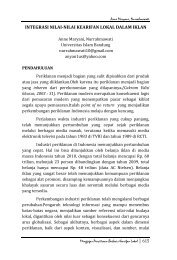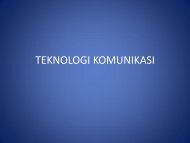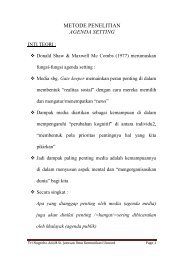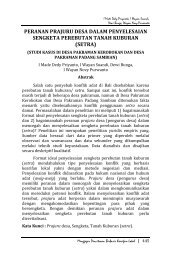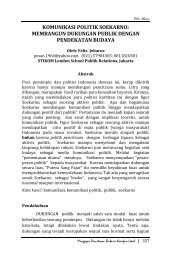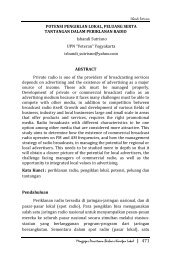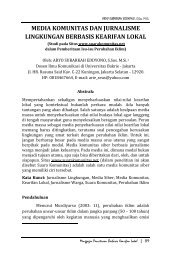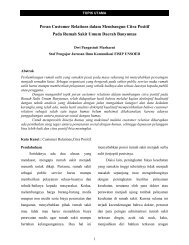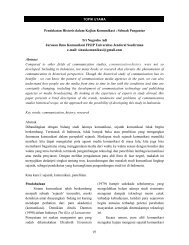New Vocabularies in Film Semiotics
New Vocabularies in Film Semiotics
New Vocabularies in Film Semiotics
Create successful ePaper yourself
Turn your PDF publications into a flip-book with our unique Google optimized e-Paper software.
116 FILM-NARRATOLOGY<br />
text: “films, <strong>in</strong> my view, are always presented—mostly and often<br />
exclusively shown, but sometimes partially told—by a narrator or<br />
narrators” (Chatman 1990:133). In this sense, Chatman’s narrator is very<br />
similar to Rimmon-Kenan’s who, at the very least, “quotes” or<br />
“transcribes” the dialogue or the gestures of the characters.<br />
In the c<strong>in</strong>ema, this narratorial encod<strong>in</strong>g is complex and utilizes both<br />
visual and audio channels: light<strong>in</strong>g, edit<strong>in</strong>g, camera angle and movement,<br />
color, mise-en-scène, can all be attributed to the visual articulations of the<br />
narrator. Music and voice-over or voice-off can be understood as its audio<br />
manifestations. For Chatman, the film-text is narrated <strong>in</strong> all its details; the<br />
activity of a narrator pervades every aspect of the text.<br />
The stark opposition of Chatman and Gunn<strong>in</strong>g’s positions and that of<br />
the non-narrator theorists illustrates the difficulty of specify<strong>in</strong>g the role of<br />
the external narrator <strong>in</strong> film. Both arguments represent vigorous attempts<br />
to place film <strong>in</strong> the broad class of narrative forms, describ<strong>in</strong>g features of<br />
the film-text that compare to the dom<strong>in</strong>ant characteristics of literary<br />
narrative. But these theories seem to ignore the basic differences of the<br />
filmtext from literary narratives, namely the overwhelm<strong>in</strong>g importance of<br />
what the literary narratologist Mart<strong>in</strong>ez-Bonati calls the MIMETIC<br />
STRATUM—the “real world of the fictional universe,” the “factual<br />
doma<strong>in</strong>” which the viewer imag<strong>in</strong>es he or she perceives directly, rather<br />
than through representation:<br />
the “mimetic stratum” of the work is not experienced as language<br />
but directly as world: the reader does not simply conclude “the<br />
narrator says P” from the narrator’s mimetic statements, he also<br />
derives “P is the case” and regards P as an unmediated fact of the real<br />
world of the fictional universe.<br />
(<strong>in</strong> Ryan 1984:131)<br />
In film, this would correspond to the dist<strong>in</strong>ction between the scenic<br />
presentation and what might be called the discursive aspects of the text, the<br />
dist<strong>in</strong>ction between the fictional world itself and the type of expressive<br />
<strong>in</strong>terpolations which might be analogized to Genette’s narrative voice.<br />
Many of the textual elements that Chatman, for example, would<br />
assimilate to the agency of a narrator are perceived by the spectator<br />
directly as elements of the fictional world, rather than as elements of a<br />
narrator’s discourse. Material such as the actor’s appearance, the location<br />
or sett<strong>in</strong>g, the mise-en-scène—the entire mimetic stratum which Chatman<br />
ascribes to the presentational activity of a narrator—are perceived<br />
primarily as the fictional world itself, and only secondarily as a narrator’s<br />
discourse. While his argument that the c<strong>in</strong>ematic narrator quotes or<br />
“presents” the entire range of events <strong>in</strong> the fictional world does serve to<br />
keep the agency of the narrator <strong>in</strong> the forefront of the model, it creates an


